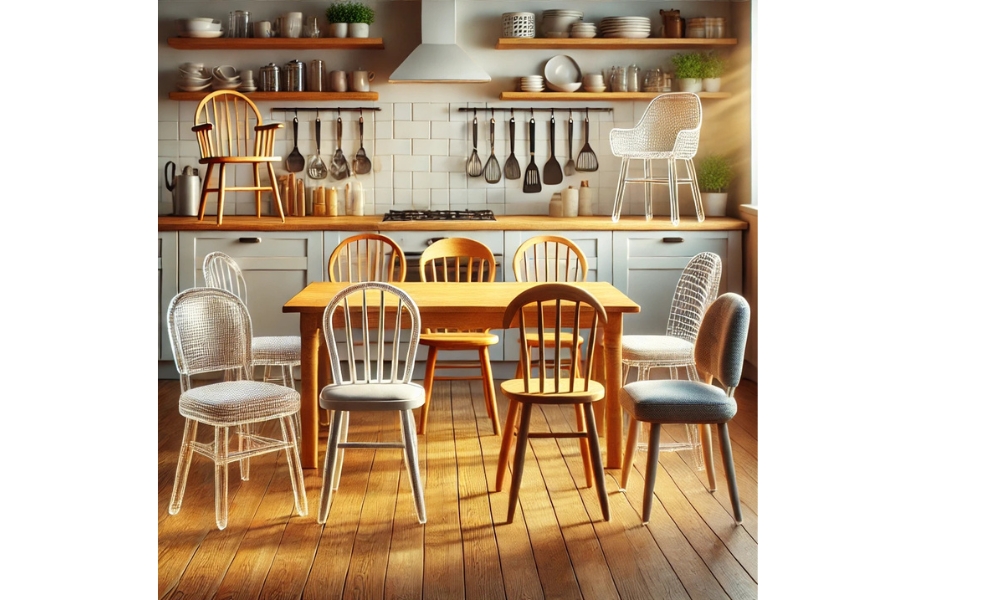In the rhythm of daily life, the kitchen serves as a hub of activity, laughter, and connection. Clean kitchen chairs, humble yet essential, quietly endure spills, stains, and scuffs. They are silent witnesses to countless dinners and late-night conversations. Over time, these chairs can accumulate grime, dulling their charm and cleanliness. Beyond aesthetics, their upkeep is crucial for a sanitary home. A pristine chair is more than furniture—it’s an emblem of care, inviting comfort and beauty into your living space.
Why Keeping Kitchen Chairs Clean Is Essential For Your Home?
A clean kitchen chair is more than a spotless surface; it is a guardian of health and harmony. Dust and crumbs nestle into crevices, creating havens for bacteria and allergens. Neglecting their care not only diminishes their appearance but also poses risks to your household’s well-being. Hygienic chairs ensure a safer environment while adding a polished touch to your dining area. Cleanliness transforms meals from routine to delightful, making every shared moment shine brighter.
How To Clean Fabric Kitchen Chairs?
Clean fabric kitchen chairs radiate elegance but demand vigilance. Begin with a thorough vacuuming to dislodge dust and debris from their plush embrace. For spills, blot swiftly—never scrub, as this pushes stains deeper. A mild soap-water concoction works wonders for surface blemishes, while persistent stains may call for the alchemy of baking soda and vinegar. Allow the fabric to dry completely, as lingering moisture invites mildew. By treating fabric chairs with care, their allure remains untarnished.
Common Challenges Faced When Cleaning Kitchen Chairs
Each material presents its own conundrum. Wood may warp if exposed to excessive moisture. Fabric traps spills, turning a minor mishap into a glaring stain. Metal, though sturdy, succumbs to rust when neglected. Plastic, the resilient option, can yellow with time or develop stubborn marks. Navigating these challenges requires understanding the material’s vulnerabilities and tailoring your cleaning approach accordingly.
Understanding Your Kitchen Chairs
Kitchen chairs come in many forms, each with unique demands. Wooden frames exude timeless warmth, while metal structures bring modern durability. Upholstered chair provide comfort but require gentle handling. To care for them properly, you must first decipher their materials and finishes. A quick inspection can reveal vulnerabilities—chipped paint, loose screws, or worn cushions—that need addressing before cleaning begins.
Tools And Supplies You’ll Need
Preparation is half the battle. Arm yourself with soft-bristled brushes, microfiber cloths, and vacuum cleaners for general upkeep. Specific tools—like wood polish, upholstery shampoo, or rust remover—offer deeper care tailored to each material. Keep a spray bottle, a non-abrasive sponge, and mild detergents within reach. Equipped with the right arsenal, you’re ready to tackle any cleaning task.
Pre-Cleaning Preparation
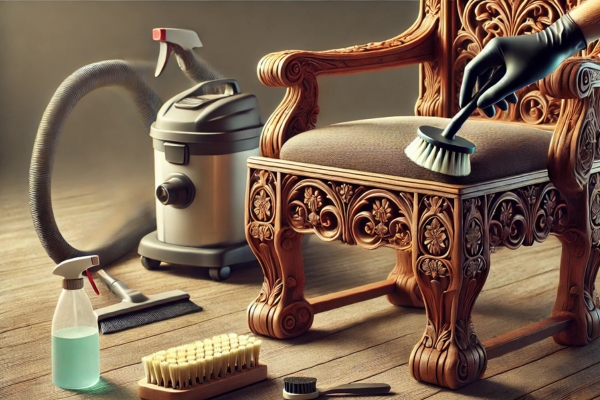
Rushing into cleaning without preparation courts disaster. Start by removing surface debris with a vacuum or brush. For intricate carvings or tight corners, use a toothbrush to dislodge hidden dirt. Always test cleaning solutions on an inconspicuous spot to ensure compatibility with the material. This precautionary step avoids surprises and sets the stage for effective cleaning.
Cleaning Wooden Kitchen Chairs
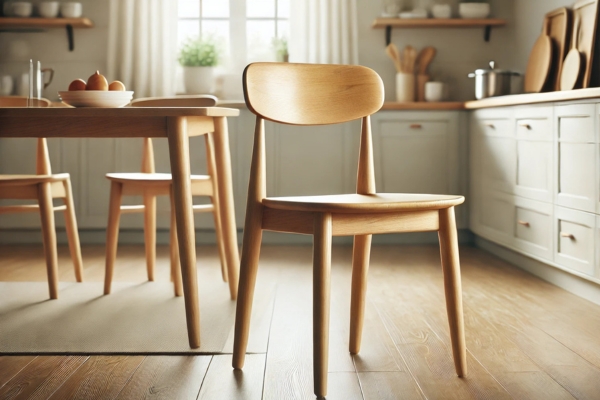
Wood exudes sophistication, but its care is delicate. Dust the surface gently, then clean using a damp cloth dipped in a mild soap solution. Avoid excessive water, as wood absorbs moisture, leading to warping. Once cleaned, dry the chair thoroughly before applying a polish to enhance its sheen. With proper care, wooden chair retain their charm for decades.
Cleaning Upholstered Kitchen Chairs

Upholstered chairs blend comfort and style but require meticulous attention. Begin by vacuuming the fabric thoroughly. For spills, act promptly—blot, don’t rub. A mixture of dish soap and lukewarm water removes most stains, while stubborn marks may respond to specialized fabric cleaners. Baking soda works wonders for odor removal. Leave no damp spots; they can harbor mold and odors.
Cleaning Metal Kitchen Chairs
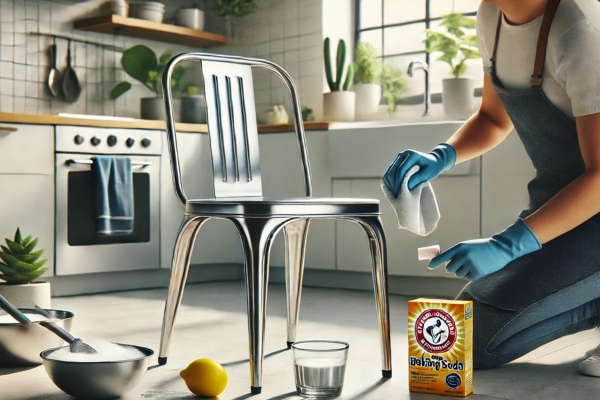
Metal chairs are durable yet vulnerable to rust. Wipe down the surface with a damp cloth and mild detergent, ensuring no soap residue remains. For rust, apply a baking soda and lemon paste, letting it sit before scrubbing gently. Dry the metal meticulously, then apply a thin layer of wax for protection. Proper care preserves the sleek, modern aesthetic of metal chair.
Cleaning Plastic Kitchen Chairs
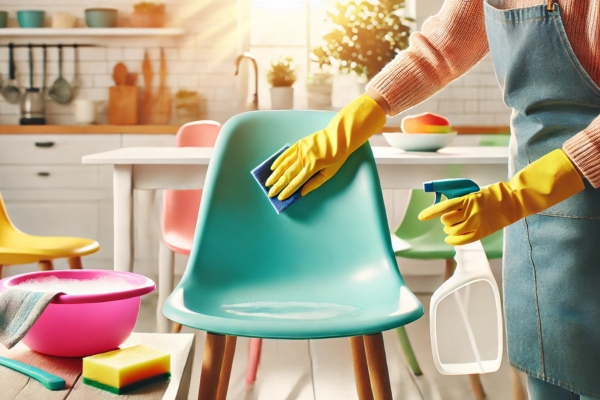
Plastic chairs offer simplicity and resilience, making them a popular choice. A sponge and soapy water suffice for everyday grime. For stains, baking soda paste is your ally—rub gently to avoid scratches. Rinse thoroughly and wipe dry to reveal a spotless, vibrant surface. With minimal effort, plastic chair can look as good as new.
Dealing With Special Chair Features
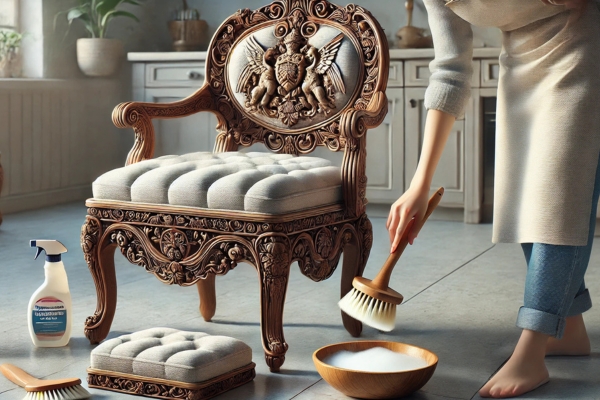
Chairs with ornate carvings or removable cushions pose unique challenges. Use a soft brush to clean intricate details, ensuring no dirt remains in crevices. Cushions can be machine-washed if the care label permits, or hand-cleaned using upholstery-safe solutions. This extra attention ensures that even the most elaborate designs stay flawless.
Using DIY Cleaning Solutions
DIY solutions combine thrift and effectiveness. A blend of white vinegar and water tackles stains across materials, while olive oil and lemon juice double as wood polish. Baking soda, a universal deodorizer, neutralizes unpleasant odors. These household staples rival commercial cleaners, offering eco-friendly alternatives for conscientious homemakers.
Avoiding Common Cleaning Mistakes
Mistakes in cleaning can irreversibly damage your chairs. Avoid soaking wood, which weakens its structure, or using abrasive pads that mar delicate finishes. Test all solutions before applying them broadly. By steering clear of these pitfalls, you ensure your chairs remain in pristine condition.
Maintaining Your Kitchen Chairs
A maintenance routine ensures lasting beauty. Dust regularly to prevent buildup, and clean spills immediately to avoid stubborn stains. Rotate upholstered cushions to distribute wear evenly. Regular upkeep not only preserves appearance but also prolongs the life of your furniture.
How To Protect Your Chairs After Cleaning
Protection is the final safeguard. Apply protective coatings to wooden and metal surfaces to prevent future damage. Slipcovers for cushions act as shields against spills and scratches. Fabric protectors repel stains, keeping upholstered chairs fresh. These measures extend the life of your chairs while reducing the frequency of deep cleans.
Eco-Friendly Cleaning Practices
Green cleaning is kinder to both your furniture and the environment. Biodegradable cleaners, reusable cloths, and homemade solutions minimize waste and chemical exposure. By adopting sustainable practices, you contribute to a healthier home and planet.
FAQs On Kitchen Chair Cleaning
How Often Should You Clean Kitchen Chairs?
The frequency of cleaning kitchen chairs depends on their usage. For most households, a weekly wipe-down is sufficient to remove dust and crumbs. However, chairs in high-traffic areas or those used by children may require more frequent attention to address spills or stains promptly. A monthly deep clean is recommended to maintain their appearance and hygiene, ensuring no hidden grime accumulates over time.
Can All Chairs Be Cleaned With The Same Products?
No, not all chairs are created equal when it comes to cleaning. Each material—wood, fabric, metal, or plastic—has specific needs and tolerances. For instance, wood responds best to mild cleaners and polish, while fabric requires upholstery-safe solutions. Metal chairs demand rust prevention, and plastic can handle stronger cleaning agents. Using the wrong product can damage the material, so it’s essential to tailor your approach to each chair’s composition.
Conclusion
Your kitchen chairs, though often overlooked, are integral to your home’s warmth and functionality. Through regular cleaning, thoughtful maintenance, and protective measures, you can preserve their beauty and utility for years. Let their shine reflect the care you put into making your house a welcoming home.
